The Governor’s Island is open to visitors only during the warm season. But it is easy to get there and pleasant to walk there. If you haven’t already been, you should visit. For that, go to the Staten Island Marina. The ferry to the Governor’s Island goes to his left. Ten minutes – and you’re away from crazy Manhattan, in silence and surrounded by history.
The Indians called this island Orekhov and went to the present Governor’s Island to fish. For the Western world, it was discovered by trader and sailor Adrian Block. Legend has it that there were more than 10 varieties of nuts, a rare plant in the northeastern United States.
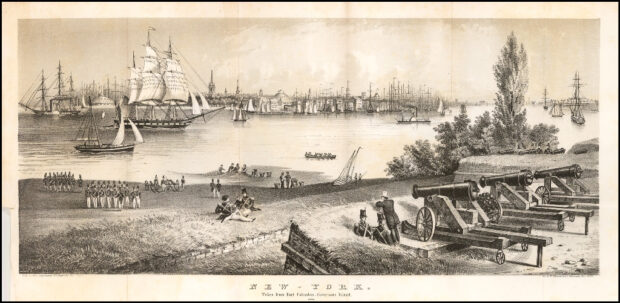
The first century and a half after the discovery of the island was called Nutten Island. In 1637, the Dutchman Van Twille bought it from the Indians for two axes, beads, and some nails.
When the English conquered the city in 1664 and New Amsterdam became New York City, the island was given full use by the governors, hence its name. During the War of Independence, General Israel Putnam, George Washington’s right-hand man, landed on the island with his army and built earthworks. Fort Jay «Fort Jay», named after John Jay, the Governor of New York at the time, was built on this site. The soldiers were then aided by students of Columbia College – there is even a plaque on the island in memory of their help.
READ Visiting New York’s Central Park: 10 Top Attractions
The fortifications continued to be built after the revolution. In addition to Fort Jay on the other side of the island, Williams Castle was built, named after the chief engineer who built it. It was a circular fortress with thick two-meter walls and firing holes, with 13 casemates on all four levels, and up to 26 guns of various calibers.
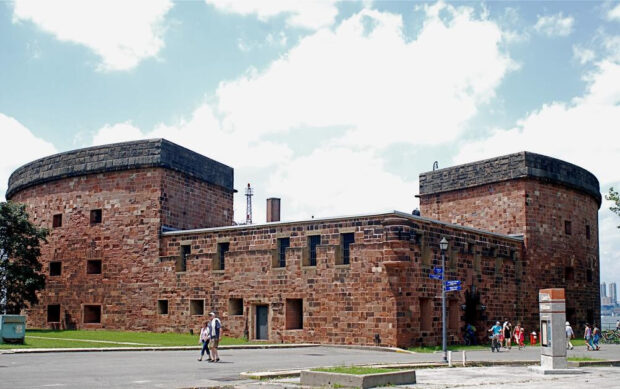
During the Civil War, both the fortress and the fort were prisons for Confederates and deserters.
At the end of the 19th century, Williams Castle had a central heating and sewage system and turned it into a military prison, one of the ten US military prisons.
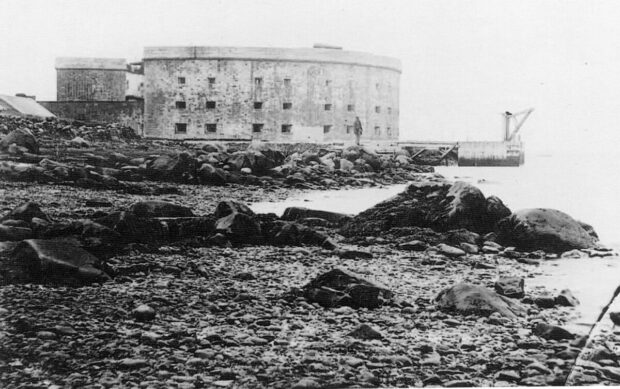
The prison was considered to be a good place, where prisoners serving sentences of less than one year were mainly housed.
In addition, in the 19th century, the island was the command of the Atlantic Division of the Army. They built a small town for the commanders and their families, lit the island with gas lamps, and set up a free ferry in Manhattan for them.
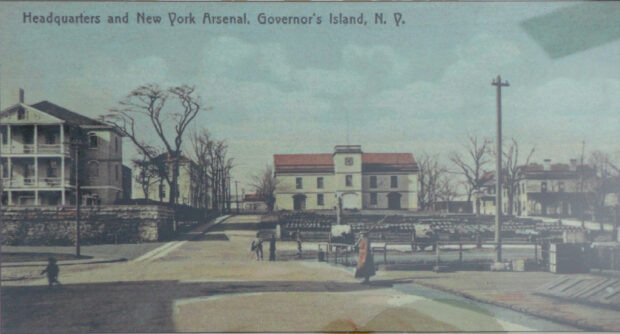
At the beginning of the 20th century the island «expanded». In 1901, the land obtained during the construction of the subway on Lexington Avenue (now «green» branch) was brought here.
READ 24 Hours in Harlem: Is It Real
Barges transported 4.5 million cubic meters of land and stones to the southern part of the island. This created a space for new construction, including a small military airport.
Here, pilot Wilbur Wright made the world’s first airplane flight over water. Wright showed this trick in 1909, during the celebration of the three-hundredth voyage of Henry Hudson and the centennial of the first Fulton steamer. He tied a boat to the bottom of the plane just in case and flew over Lusitania’s ship, which was at that time in New York Harbor, and around the Statue of Liberty.
There is now a monument to this event on the island, with the bronze propeller being an exact replica of the wooden propeller on Wright’s plane.
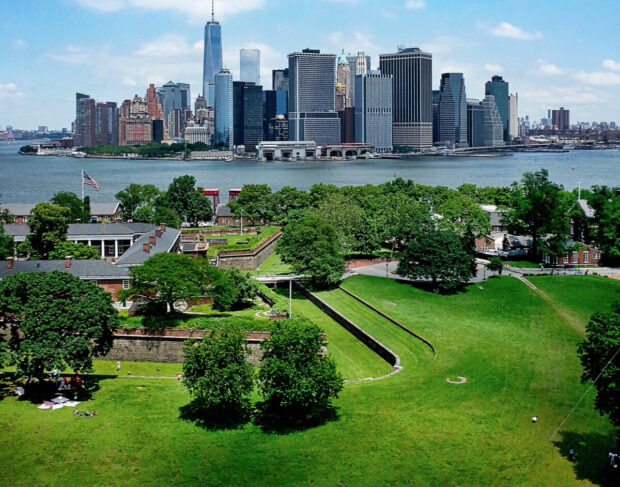
In the 20th century, the construction and settlement of the island continued. An officers’ club, a cinema, a school, hospitals, three churches, and new barracks were built.
These barracks even created a conflict between the military and the city. New York City Mayor Fiorelli La Guardia decided to build an airport on the island. But the military did not give up the land, and in order not even to dream of it, they built barracks in the middle of the island. The island was under military jurisdiction until 1965.
READ How to tip like a New Yorker
In recent decades, the island has become a tourist attraction. Every year there are numerous exhibitions, concerts, festivals, and street markets. A complete list of events for this summer can be found in the calendar of events on the island’s official website.
Turner Prize winner Rachel Whiteread built this no-home on the recently completed Discovery Hill on Governors Island. Around it lie bronze utensils that belong to a real house, plates, cups, bottles, an old shoe, some of them found on the island, all of which the British artist cast in crumpled, broken molds.
If you stand there between the cast of an old shoe and the white Kein-Haus, you can see the entire harbor basin. The Statue of Liberty, Ellis Island. Immigrant stories like that of the writer Henry Roth, who dedicated one of the great American novels of the twentieth century to this experience with his book “Call It Sleep” soar in the mind.
Roth came to New York from Galicia as a three-year-old and spent his first nights on the new continent on Ellis Island, where the immigration authorities and the reception center for newcomers were located. Everyone was scrutinized there, many had to wait days, nights, weeks in the facilities on Ellis Island before they were allowed to cross into town, and people were repeatedly sent back because they were sick or criminals. A museum over there kept the stories and also the pictures of them.
Like us on Facebook for more stories like this: